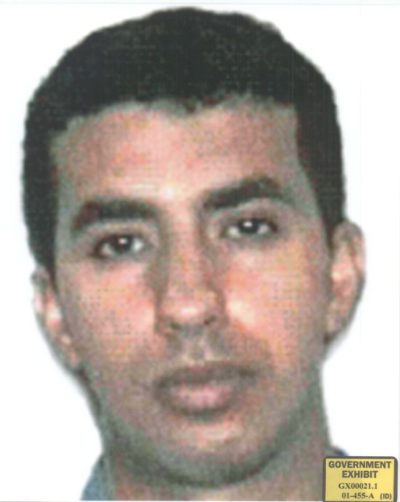Ahmed al-Haznawi (Ahmed Ibrahim al-Haznawi)

Ahmed al-Haznawi belongs to Alghamdi tribe. He was the son of a Saudi imam from the Al-Bahah province, a province in the south west of Saudi Arabia. It is the capital of Al Bahah Province nestled between the resorts of Mecca and Abha, Al Bahah is one of the Kingdom’s prime tourist attractions. Haznawi grew up in the village of Hazna, where his father was a cleric at the mosque in the central marketplace section of the village. Haznawi belonged to a family that was part of the larger, al-Ghamdi tribe, sharing the same tribal affiliation with fellow hijackers Saeed al-Ghamdi, Hamza al-Ghamdi, and Ahmed al-Ghamdi. He memorised the Quran, giving him the title Hafiz. This group is noted as being some of the more religiously observant of the hijackers, and they are thought to have met each other some time in 1999. Alghamdi announced he was leaving his family in 1999 to fight in Chechnya, although his father forbade him. His father and brother, Abdul Rahman al-Haznawi, reportedly last heard from him in late 2000, after he made references to training in Afghanistan. On November 12, 2000, Haznawi applied for and received a two-year U.S. B-1/B-2 (tourist/business) visa in Jeddah, Saudi Arabia. From November 27, 2000 through December 27, 2000, Haznawi was in Saudi Arabia for Ramadan. It is theorized that during this trip, he may have initially told Saeed and Hamza al-Ghamdi about the operation. Some time late in 2000, Haznawi traveled to the United Arab Emirates, where he purchased traveler’s cheques presumed to have been paid for by Mustafa al-Hawsawi. Five other hijackers also passed through the UAE and purchased travellers cheques, including Majed Moqed, Saeed al-Ghamdi, Hamza al-Ghamdi, Wail al-Shehri and Ahmed al-Nami.
Ahmed al-Haznawi was one of four hijackers believed to be staying at a Kandahar guest house in March 2001, where they were seen by Mohammed Jabarah. Jabarah remembered Haznawi specifically, saying that he was “very devout and could recite the entire Koran from memory.” On June 8 he arrived in Miami, Florida with fellow hijacker Wail al-Shehri. He was one of 9 hijackers to open a SunTrust bank account with a cash deposit around June 2001. He is believed to have moved in with Ziad Jarrah, who got a new apartment on Bougainvilla Dr. in Lauderdale-by-the-Sea, after both men gave the landlord photocopies of their German passports, which he later turned over to the FBI. On June 25, Jarrah took Ahmed al-Haznawi to Holy Cross Hospital in Fort Lauderdale on advice of his landlord Charles Lisa. Haznawi was treated by Dr. Christos Tsonas, who gave him antibiotics for a small gash on his left calf. While he told staff that he had bumped into a suitcase, the media briefly reported it as a sign of cutaneous anthrax and a possible link to the 2001 anthrax attacks, although FBI later addressed the rumors stating that “Exhaustive testing did not support that anthrax was present anywhere the hijackers had been.”
On July 10 Ahmed al-Haznawi obtained a Florida driver’s license, later obtaining another copy on September 7, 2001 by filling out a change-of-address form. Five other hijackers also received duplicate Florida licenses in 2001, and others had licenses from different states. Some have speculated that this was to allow multiple persons to use the same identity. Jarrah and Haznawi both received their one-way tickets for United Airlines Flight 93, on September 5. On September 7, all four Flight 93 hijackers flew from Fort Lauderdale to Newark International Airport aboard Spirit Airlines. On September 11, 2001, Haznawi arrived at Newark International Airport to board Flight 93. Although he was selected for additional security by CAPPS and screened, he was able to board the flight without incident, with only his checked bags requiring extra screening for explosives. Due to the flight’s delay, the pilot and crew were notified of the previous hijackings that day and were told to be on the alert. Within minutes, Flight 93 was hijacked as well. At least two of the cellphone calls made by passengers indicate that all the hijackers they saw were wearing red bandanas, which some believe may have signified an allegiance to the Egyptian Islamic Jihad. The calls also indicated that one of the men had tied a box around his torso, and claimed there was a bomb inside – it is not known which hijacker this was. Some passengers expressed doubt that the bomb was real. Passengers on the plane heard through phone calls the fates of the other hijacked planes. A passenger uprising soon took place. Hijacker-pilot, Ziad Jarrah, crashed the plane into an empty field near Shanksville, Pennsylvania in order to prevent the passengers from gaining control of the plane. The crash killed everyone on board.
Born
- October, 11, 1980
- Saudi Arabia
- Hazna, al Bahah Province
Died
- September, 11, 2001
- USA
- Shanksville, Pennsylvania
Cause of Death
- plane crash

